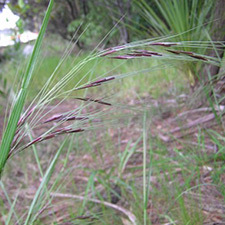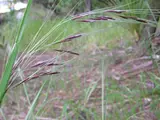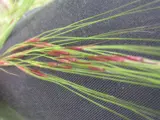 Chilean needle grass
Chilean needle grass
Common name: Chilean needle grass
Botanical name: Nassella neesiana
Management programme: Exclusion
Chilean needle grass is appropriately named. The sharp, needle-like tips of the seeds can penetrate skin and flesh and their backward-pointing bristles make them hard to remove once they are embedded. Chilean needle grass can cause negative effects to farming and economic well-being.
Why is it a pest?
- Primarily a production pest plant, affecting pastoral and arable farming.
- It grows into thick stands, excluding other native and grass species.
- The seeds attach easily to stock, particularly sheep wool, downgrading hides, wool and meat.
- The seed hitches a lift on animals, humans (clothing and footwear), machinery, and vehicles, but can also spread in soil, mud, plant matter and water.
Where is it found?
Chilean needle grass is not known to be in the Bay of Plenty. Risk areas are dry, low fertility open areas and indigenous ecosystems.
What does it look like?
- An erect tussock-like perennial grass that can grow up to 1m in height.
- Look for purple tinged, spiky heads and lime green leaves in spring and summer.
- Leaves are rolled when in drought, and harsh to the touch.
- Large drooping purple tinged flowerheads, ripen into hard, sharp seeds with long twisting tails.
- Flowers from November to December.
What are the rules?
Exclusion
Chilean needle grass is an exclusion pest. This means it is not yet known to be established in the Bay of Plenty region. The Bay of Plenty Regional Council is responsible for managing new incursions of this plant into the region.
How do you get rid of it?
Let us know if you think you have seen Chilean needle grass or have it on your property by emailing stop.pests@boprc.govt.nz or alternatively call 0800 884 880.
Images


